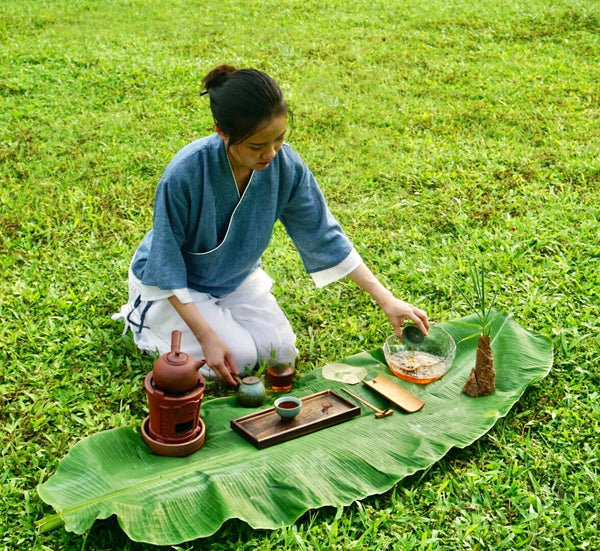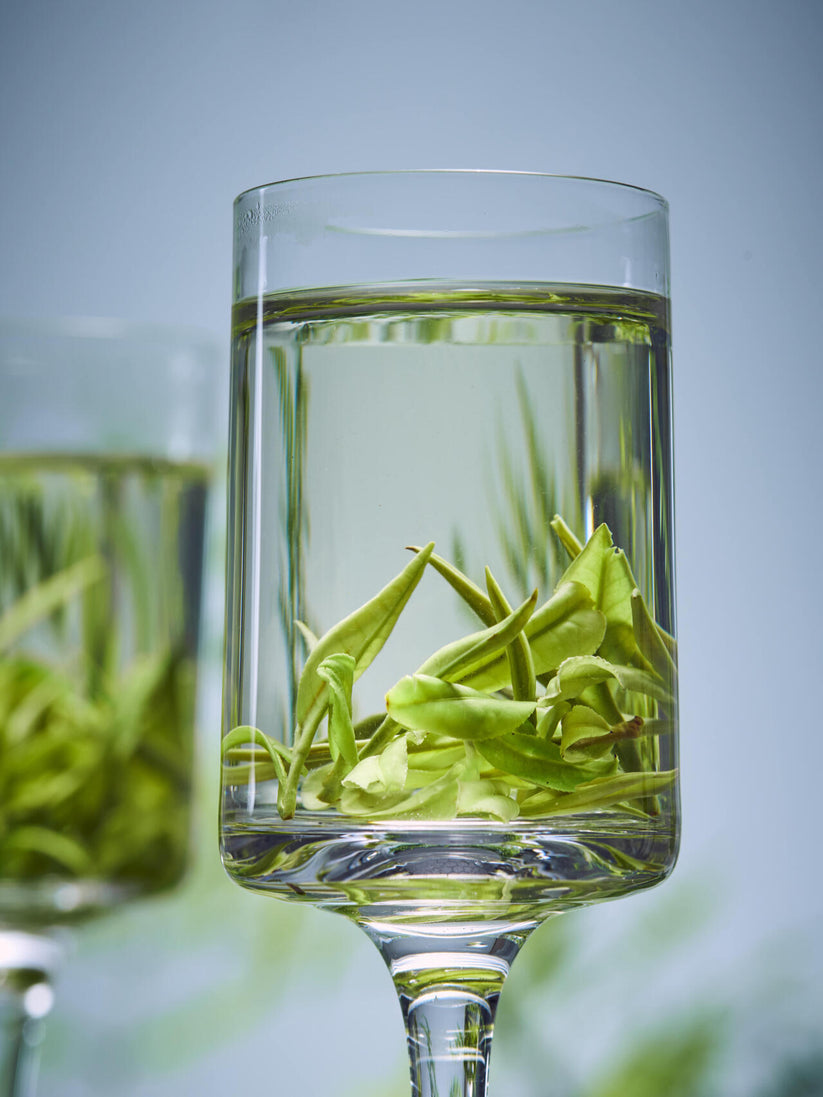Oolong tea and green tea are both made from Camellia Sinensis plants, but the making process is different, which means that the origin, appearance, soup color, taste and other aspects of the tea are different.
Here are some of the major differences between oolong tea and green tea:
1. Making Process: The core process of oolong tea is shaking green, which is semi-fermented tea; the core process of green tea is killing, which is unfermented tea.
- Oolong tea: The characteristic is green leaves with red edge.
The production process of oolong tea includes picking, sun drying, shaking, cooling, frying, wrapping, and drying. Among them, shaking green (making green) is the key process to form the unique quality characteristics of oolong tea, and it is the basis for the aroma and taste of oolong tea. The dry tea has the obvious characteristics of green leaves with red edges and rich aroma.

Green tea is made by killing, rolling, and drying, and is not fermented, so a large amount of natural substances are retained.
Green tea varieties include: West Lake Longjing, Biluochun, Anji White Tea, Taiping Houkui, Huangshan Maofeng, Lu'an Guapian, Yunnan Green Tea, Enshi Yulu, Duyun Maojian, Mengding Ganlu, Xinyang Maojian, etc.

2. Origin: Oolong tea is mostly produced in Wuyi, Fujian, Anxi, Guangdong, Chaozhou, and Taiwan; green tea is produced in many provinces in China, the most famous of which are Zhejiang, Anhui, Henan, and so on.
Oolong tea can be divided into the following types:
- Northern Fujian Oolong: Wuyi Rock Tea, such as Wuyi big red robe oolong tea (Da hong pao oolong tea), Rougui, etc.
- Southern Fujian Oolong: Anxi Tie Guan Yin
- Guangdong Oolong: Phoenix Dancong Tea
- Taiwanese Oolong: Dong Ding Oolong Tea

Green tea can be divided into the following types:
- Hangzhou, Zhejiang: Longjing Green Tea
- Suzhou, Jiangsu: Bi Luo Chun Green Tea
- Huzhou, Zhejiang: Anji Bai Cha
- Huangshan, Anhui: Huang Shan Mao Feng, Taiping Houkui (Monkey King Tea), Lu An Gua Pian

3. Storage: Oolong tea can be stored at room temperature, the storage temperature is below 30℃ (86℉), and green tea needs to be refrigerated.
4. Appearance: Oolong tea is oily green; green tea is tender green.
In terms of appearance, green tea can be roughly divided into different shapes: long strips, flat, curly, and flakes; oolong tea can be roughly divided into tight curls, etc.
5. Color: The color is mainly divided into three aspects: dry tea leaves, soup color, and leaf bottom color.
- Dry tea leaves: Green tea is mainly green, such as dark green and tender green, while oolong tea is yellow-green and oily, sandy green and dark green, green-brown and fresh, etc., and the color is generally darker than green tea.
- Soup color: Green tea has green leaves and green soup, while oolong tea soup has orange-yellow, golden yellow, etc.


- Leaf bottom: Green tea is still green, yellow-green, tender green, etc., while the tea leaves after oolong tea are green-brown, dark brown, etc., and the most distinctive feature is "green leaves with red edges".
6. Tea aroma and taste: Oolong tea has a floral scent and the taste of fruits and nuts, while green tea has the taste of leaves or plants. Oolong tea has a mellow taste, while green tea is refreshing and sweet.
After fermentation, the bitterness of oolong tea is greatly reduced, which also forms the unique flavor of oolong tea, which has the characteristics of the sweetness of black tea and the fragrance of green tea. The overall feeling of drinking is that the aroma is clear, strong but not astringent, the taste is mellow, the fragrance lingers on the teeth and cheeks, and the aftertaste is sweet and fresh. At the same time, the fragrance is long-lasting and can be brewed for a long time. The second and third brews are the most mellow. Among them, the famous Anxi Tieguanyin has the saying that "the fragrance remains after 7 brews".
The taste of green tea is generally fresh and tender, but the degree of resistance to brewing is low, generally three to five brews.















